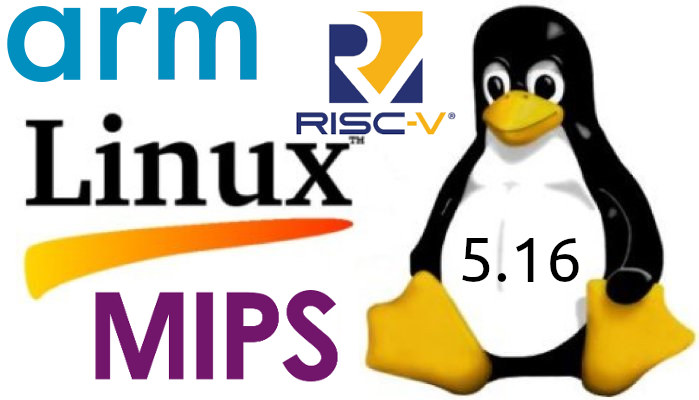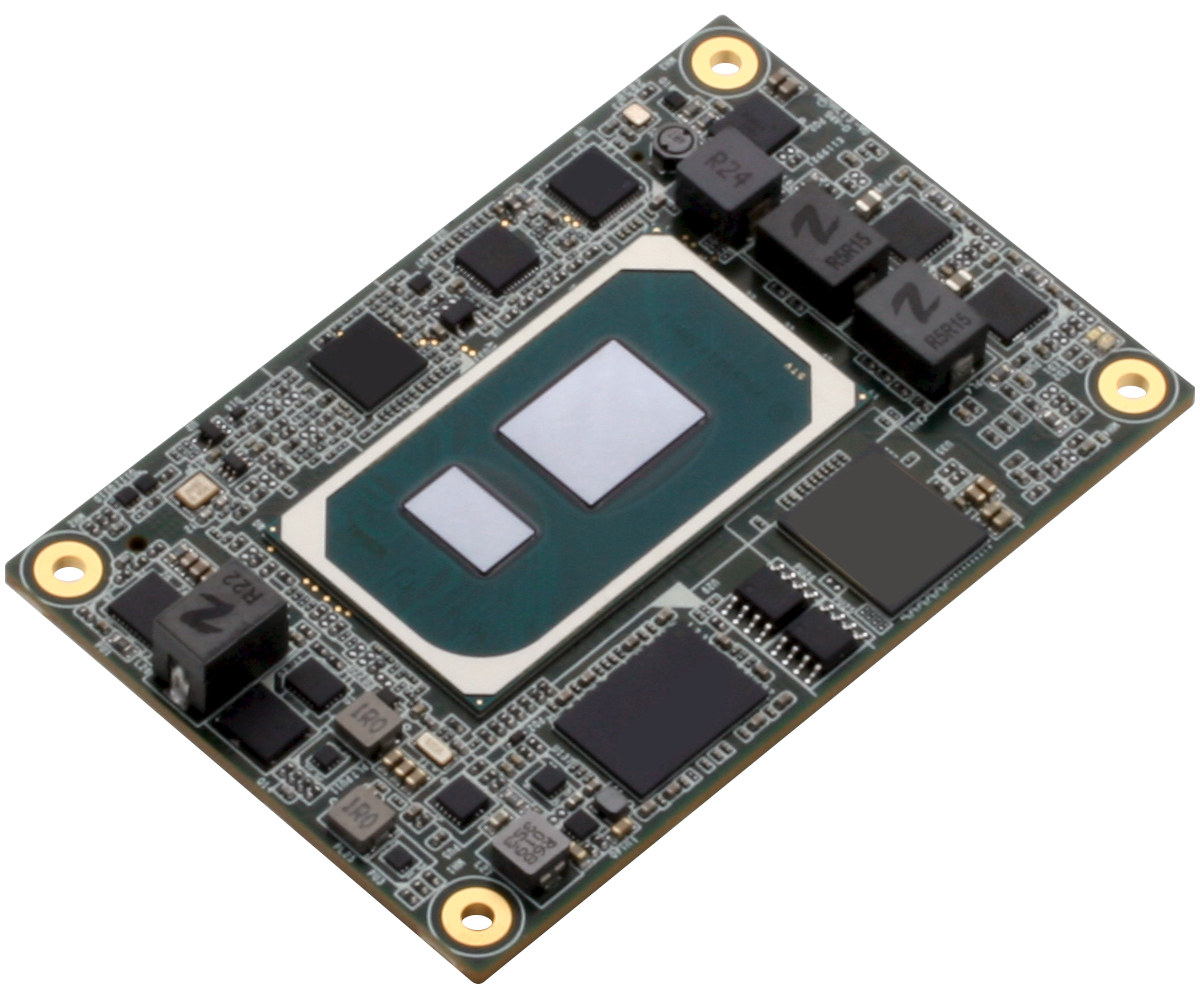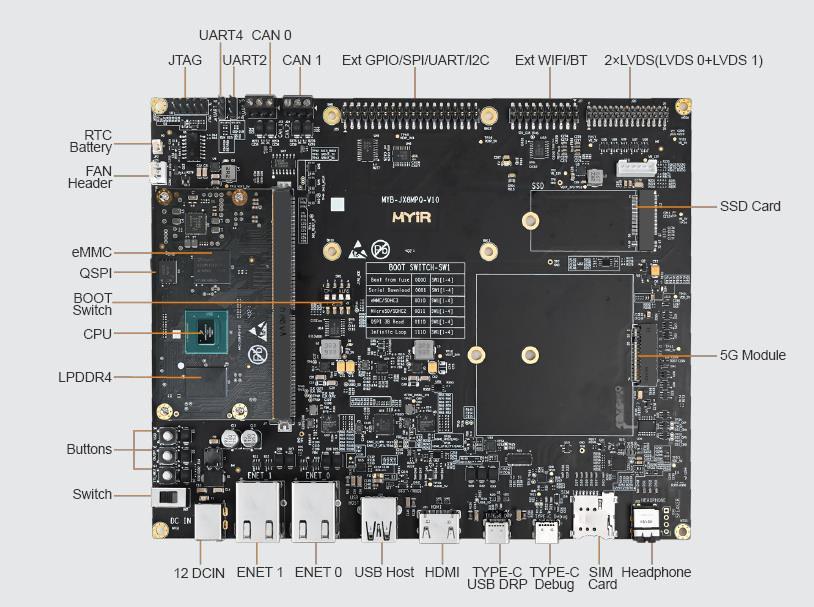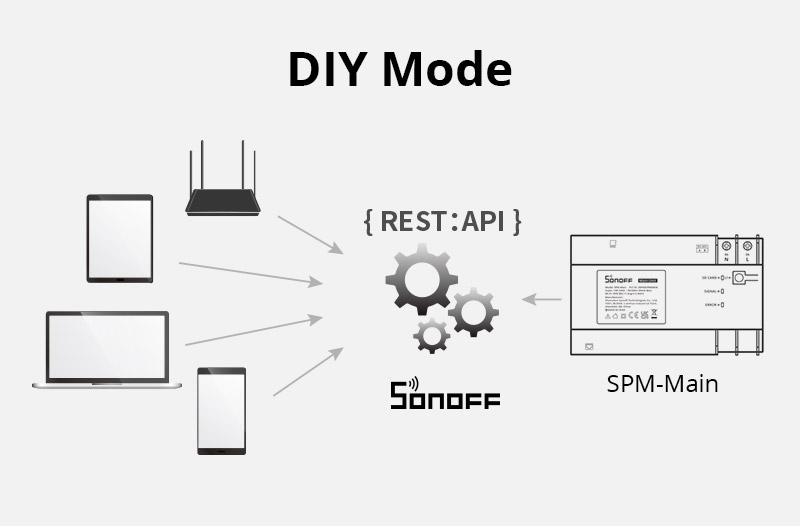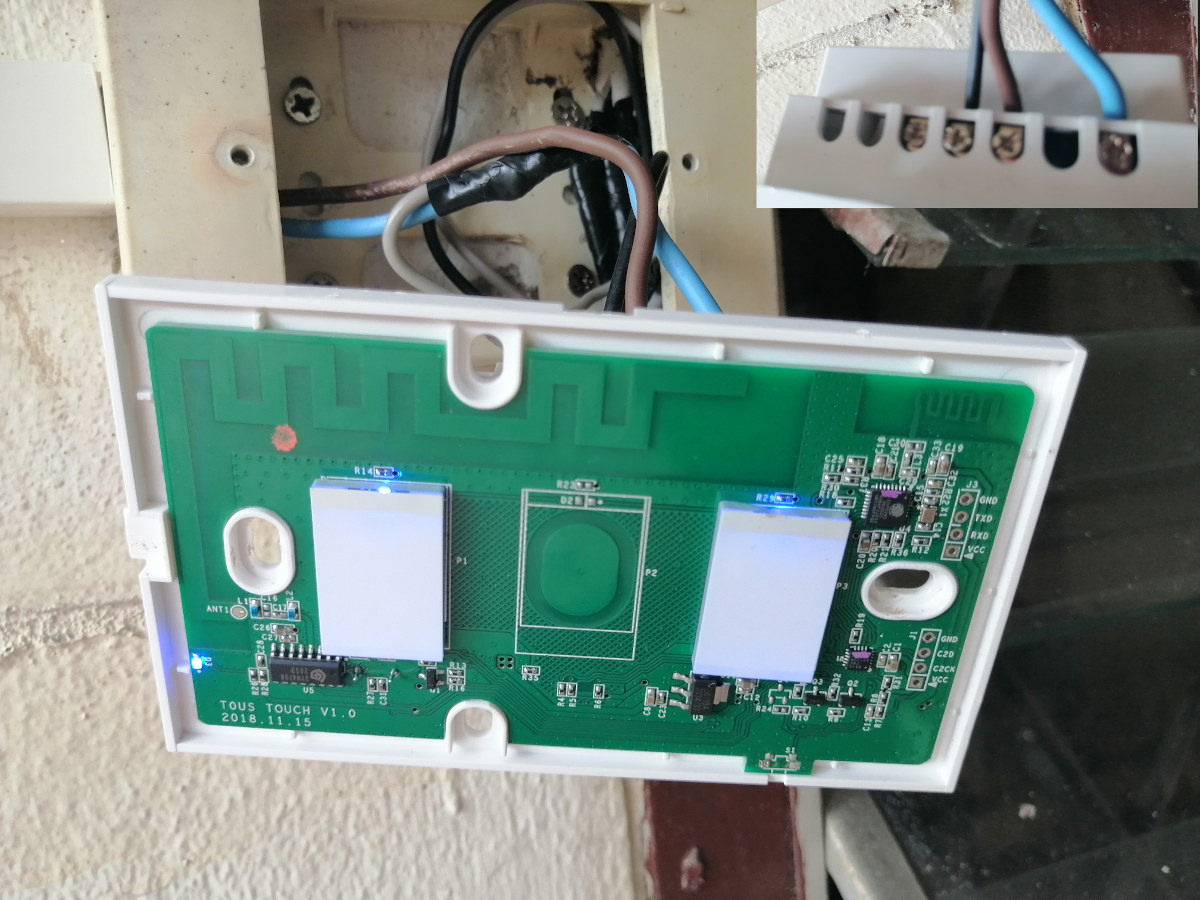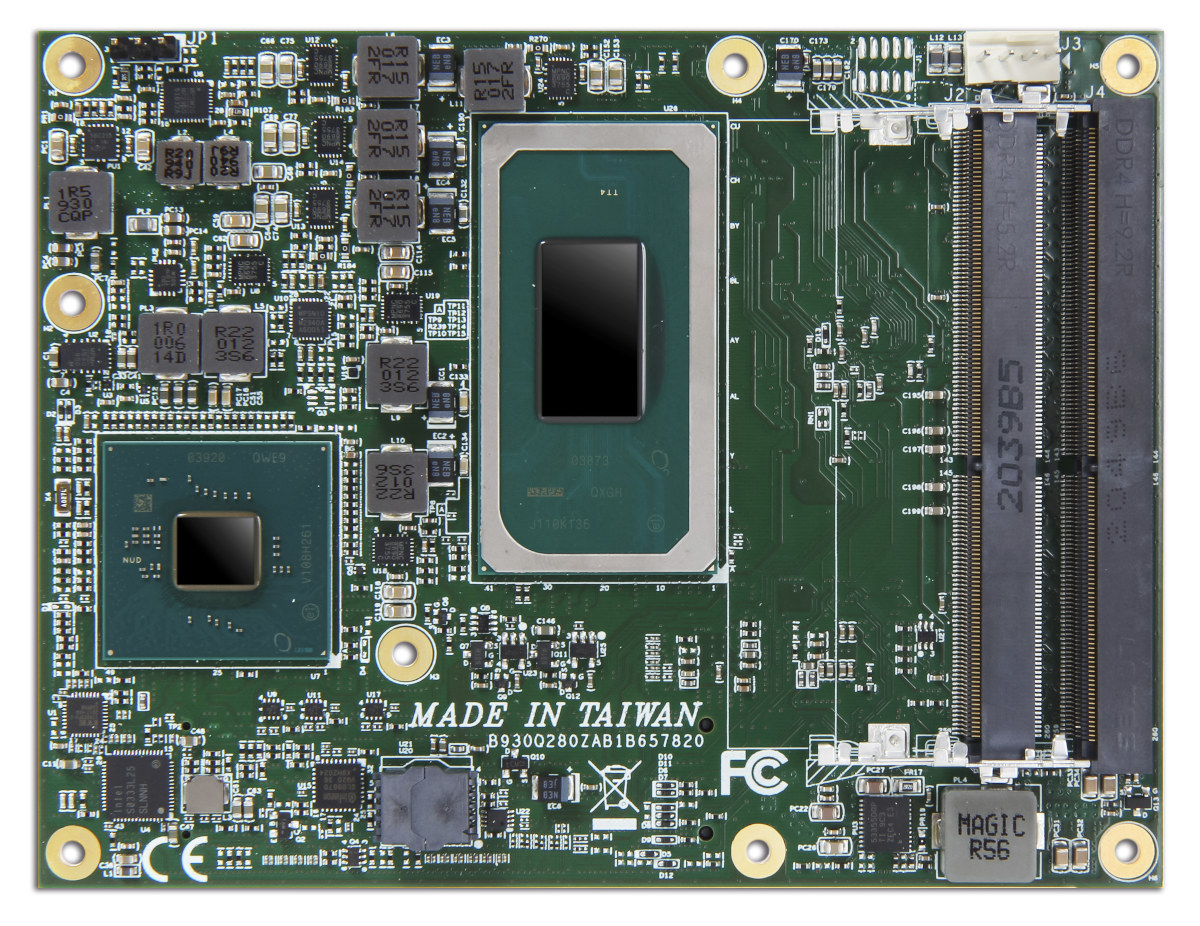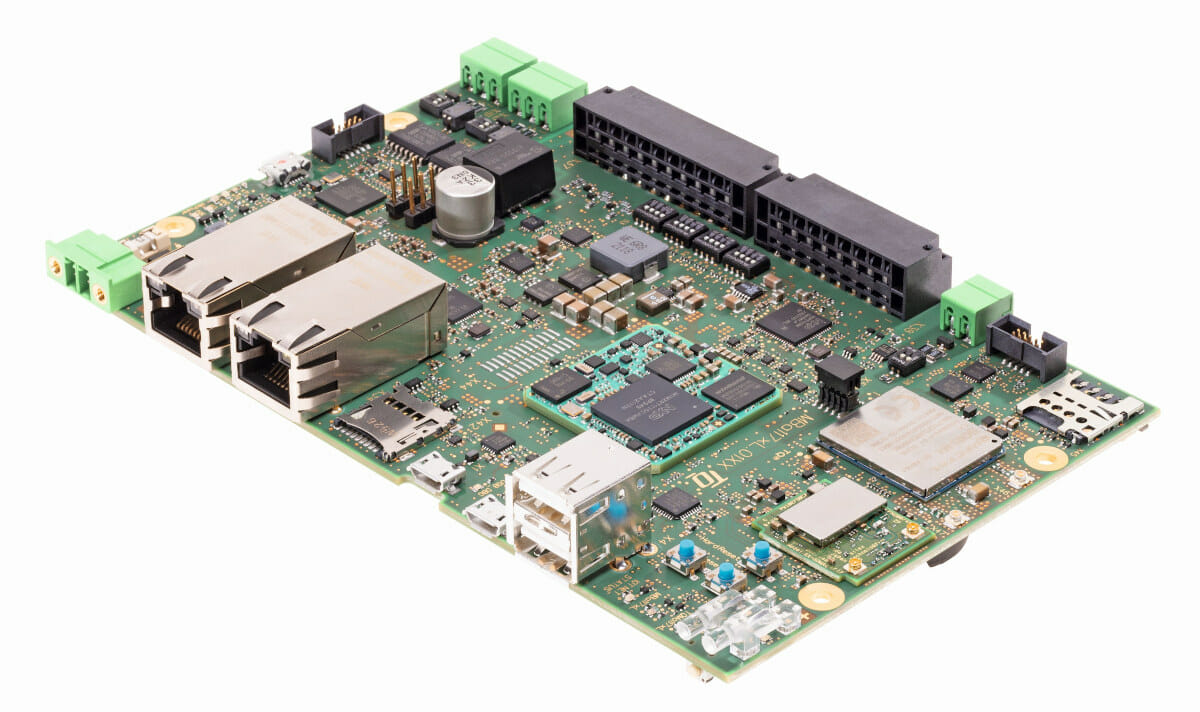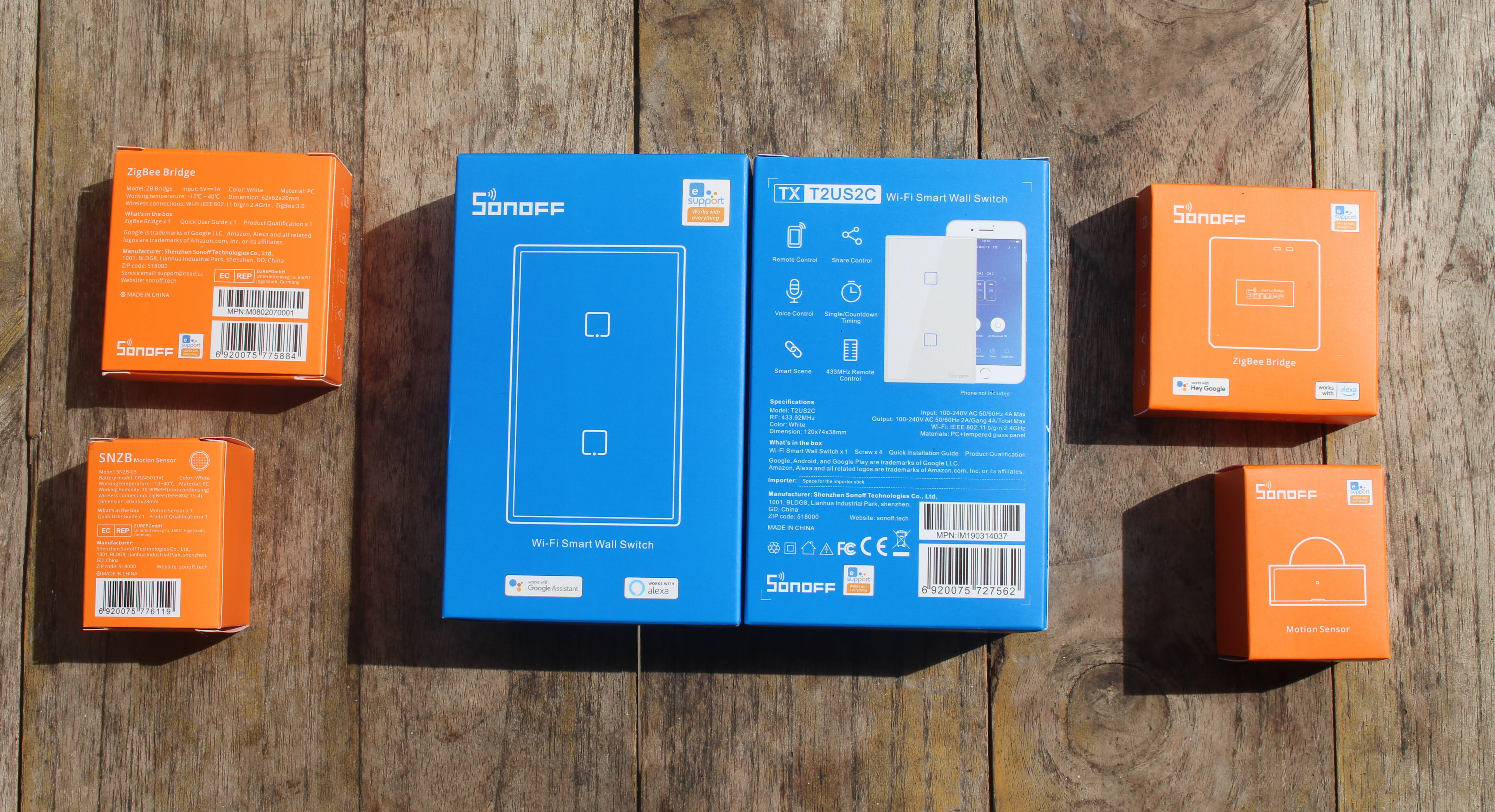Linus Torvalds has just announced the release of Linux 5.16: Not a lot here since -rc8, which is not unexpected. We had that extra week due to the holidays, and it’s not like we had lots of last-minute things that needed to be sorted out. So this mainly contains some driver fixes (mainly networking and rdma), a cgroup credential use fix, a few core networking fixes, a couple of last-minute reverts, and some other random noise. The appended shortlog is so small that you might as well scroll through it. This obviously means that the merge window for 5.17 opens tomorrow, and I’m happy to say I already have several pending early pull requests. I wish I had even more, because this merge window is going to be somewhat painful due to unfortunate travel for family reasons. So I’ll be doing most of it on the road on a laptop […]
COM Express Type 10 Tiger Lake UP3 module targets embedded mobile applications
AAEON NanoCOM-TGU is a COM Express Type 10 module powered by the 11th generation Intel Tiger Lake UP3 designed for embedded mobile applications, potentially leveraging AI and Deep Learning acceleration engines from the processor with use cases ranging from telematics, Smart Cities, and industrial automation. The NanoCOM-TGU supports up to 16GB LPDDR4x memory with in-band ECC, up to 256GB PCIe NVMe SSD, and offers two SATA 3.0 interfaces, 2.5GbE networking, DDI and eDP video outputs, as well as ten USB ports and four PCI Express x1 interfaces. NanoCOM-TGU specifications: SoC – Intel Tiger Lake UP3 “E” or “GRE” processor with Intel UHD Graphics from Celeron 6305E up to Core i7-1185G7E/1185GRE @ 1.8 GHz /4.4 GHz; 15W TDP System Memory – Up to 16GB onboard LPDDR4x-4266 memory in-band ECC supported by SoC Storage – Up to 256GB onboard NVMe SSD Networking – Intel i225-LM 2.5GbE controller COM Express Type 10 […]
MYIR introduces i.MX 8M Plus module and devkit with AI/ML capabilities
There are already plenty of i.MX 8M Plus systems-on-module, but here’s one more courtesy of MYIR Tech with MYC-JX8MPQ i.MX 8M Plus module with as well as MYD-JX8MPQ development board for evaluating the solution. The module is especially well suited to applications leveraging Artificial Intelligence (AI) and Machine Learning (ML) with the NXP Cortex-A53/M7 integrating a 2.3 TOPS Neural Processing Unit (NPU). The module comes with up to 6GB LPDDR4, 128GB eMMC flash, 32MB QSPI flash, a PMIC for power management, as well as a 314-pin MXM 3.0 connector exposing the I/Os from the processor. MYC-JX8MPQ module specifications: SoC – NXP i.MX 8M Plus (MIMX8ML8CVNKZAB) quad-core Cortex-A53 processor @ 1.6 GHz, real-time Arm Cortex-M7 co-processor @ 800 MHz, 2.3 TOPS AI accelerator, 2D/3D GPU, HiFi4 Audio DSP, and 1080p VPU System Memory – 3GB LPDDR4 (option up to 6GB) Storage – 8GB eMMC flash (option up to 128GB), 32MB QSPI […]
SONOFF releases HTTP API for SPM-Main power meter
SPM-Main is the main unit of Sonoff Smart Stackable Power Meter using RS485 to provide up to 128 relays. Besides support for the eWelink mobile app, we were promised an HTTP API at the time of the launch in September 2021. ITEAD kept its promises and has now released the HTTP API for the SPM-Main smart power meter to allow IoT home automation users and developers to control SONOFF devices via existing home automation open-source platform or local HTTP client. It’s the same REST API used for SONOFF MINI & R3 smart switches, but it adds support for power monitoring as well. The API allows you to switch between eWelink and DIY modes as needed, and provides the following functions: Device Status Broadcast – Returns the switch status of all channels with current, voltage, power, overload status, RS485 communication status, and more Get the List of Sub-device – List of […]
Setting up a motion activated light with Sonoff Zigbee sensor and T2 WiFi switch
Earlier this month, I received a Sonoff ZBBridge Zigbee gateway, a motion sensor, and a Sonoff T2 wireless switch in order to set up everything to work as a motion activated light using Zigbee and WiFi through the eWelink Android app and cloud service. You can check out the first post to have a closer look at the hardware and accessories. We’ve now had time to configure everything and will report the results of the project in this post. The idea is basically to detect motion with the Zigbee sensor, which then transmits the info through the gateway, and the T2 switch is controlled by the eWelink cloud. Last time around, I thought I had a switch with a neutral wire at home, but I did not check in detail enough, and I’ve been unable to use it. Without suitable switches in my home, it was not practical to rewire […]
Portwell COM Express Tiger Lake-H module supports 2.5GbE, PCIe Gen 4, 8K, up to 64GB DDR4
Portwell PCOM-B657VGL joins other COM Express and COM HPC modules based on Intel Tiger Lake-H Xeon, Core, and Celeron embeddded processors such as ADLINK Express-TL and Congatec conga-HPC/cTLH. Just like its competitors, the Portwell COM Express Type 6 Basic module offers 8K video output, PCIe x16 Gen 4, up to 64GB DDR4, USB 3.2 Gen 2, and 2.5GbE networking for a wide range of higher-end embedded applications such as industrial automation, medical equipment, graphics-intensive applications, and artificial intelligence. Portwell PCOM-B657VGL specifications: SoC (one or the other) General Embedded Intel Celeron 6600HE dual-core processor @ 2.6GHz with 8MB L3 Cache, 16EU Intel UHD graphics, 35W TDP Intel Core i3-11100HE processor with 4 cores / 8 threads @ 2.4GHz (up to 4.4GHz in Turbo Boost) with 8MB L3 Cache, 16EU Intel UHD graphics, 45/35W cTDP Intel Core i5-11500HE processor with 6 cores / 12 threads @ 2.6GHz (up to 4.1GHz in Turbo […]
TQ Embedded launches NXP i.MX RT1170 SoC module and SBC
TQ Embedded (aka TQ) has just announced the availability of the TQMa117xL system-on-chip module based on NXP i.MX RT1170 crossover processor family, and as well as MBa117xL single board computer (SBC) based on the 31×31 mm module. TQMa117xL’s small size has been achieved thanks to a 277-pad LGA design, with the module still integrating LP-SDRAM, Quad-SPI NOR flash and EPROM, a PMIC, as well as an optional security chip. TQMa117xL i.MX RT1170 SoM Specifications: Crossover processor (one or the other) NXP i.MX RT1171 with Cortex-M7 @ up to 1 GHz (Consumer) or 800 MHz (industrial), 1 GbE (AVB) NXP i.MX RT1172 with Cortex-M7 @ 800 MHz/ 1 GHz, graphics accelerators and camera/display interfaces, 1GbE (AVB) NXP i.MX RT1173 with Cortex-M7 @ 800 MHz (industrial only), Cortex-M4 @ 400 MHz, 1GbE (AVB), graphics accelerators and camera/display interfaces, tamper inteface NXP i.MX RT1175 with Cortex-M7 @ 800 MHz / 1 GHz, Cortex-M4 […]
Playing with Sonoff Zigbee & WiFi automation – Part 1: Hardware overview
I don’t think I’ve ever used Zigbee, but I’ll soon have the opportunity as ITEAD sent me the Sonoff ZBBridge gateway, a Sonoff T2 2-gang WiFi switch as well as a Zigbee motion sensor. I had reviewed several Sonoff devices in the past, but it had been over three years that I hadn’t. ITEAD recently contacted me basically telling me I could select whatever I wanted from their product list for a review on CNX Software. Since I had reviewed several of the company’s WiFi smart sockets, smart switches, and a light bulb, I had less to play with, and then I thought it might be fun to play with Sonoff Zigbee products. But I did not own any Zigbee hardware, so I had to think about a use case. I have a small annoyance in the house I rent. When we come back at night, we have to leave […]


